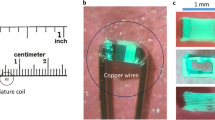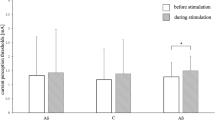Abstract
WHEREAS the effect of constant currents on the peripheral nerve has been thoroughly investigated, very little work has been done on the effects of such currents on the central nervous system. However, during the last few years, a number of papers has been published by Scheminzky and his co-workers. They found that the effect of passing a constant current through a frog depended on the direction of the current. While a descending current (that is, in the head-to-foot direction) produced paralysis (galvano-narcosis), an ascending current produced convulsions. Scheminzky thought that it was impossible to explain this phenomenon in any other way than by a 'functional polarity', involving an assumption that the whole of the central nervous system is built up of a series of polarized elements, succeeding each other along the axis of the system. He claims to have discovered "a new law of the general physiology of the central nervous system"—a law which would be rather difficult to understand.
This is a preview of subscription content, access via your institution
Access options
Subscribe to this journal
Receive 51 print issues and online access
$199.00 per year
only $3.90 per issue
Buy this article
- Purchase on Springer Link
- Instant access to full article PDF
Prices may be subject to local taxes which are calculated during checkout
Similar content being viewed by others
Author information
Authors and Affiliations
Rights and permissions
About this article
Cite this article
WINTERSTEIN, H., SEDEFCIYAN, A. Effects of Constant Current in Relation to 'Functional Polarity'. Nature 155, 238–239 (1945). https://doi.org/10.1038/155238a0
Issue Date:
DOI: https://doi.org/10.1038/155238a0
This article is cited by
-
Konstante Stromwirkung und « funktionelle Polarität »
Experientia (1948)
Comments
By submitting a comment you agree to abide by our Terms and Community Guidelines. If you find something abusive or that does not comply with our terms or guidelines please flag it as inappropriate.



